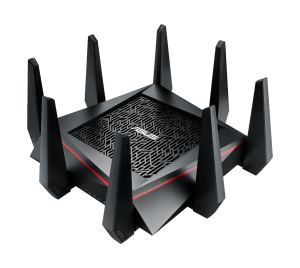
802.11ax will be the next Wi-Fi standard that will grace our routers, but this will require newer hardware
There is the impending plan to define the IEEE 802.11ax Wi-Fi wireless local-area-network standard which is intended to supplant the 802.11ac standard used for general-purpose Wi-Fi networks. Qualcomm are even offering an initial lot of silicon for this standard in order to have something that can be proven.
But what is it about?
One of the man benefits is wider bandwidth which allows for five times more bandwidth than what 802.11ac offers. But there is also the idea that we will see Gigabit throughput levels being offered for real rather than as headline speeds which are based on a “link-level” speed without any error correction.
This is brought about with increased MIMO multiple-antenna / multiple-front-end abilities such as MIMO-OFDM, which is expected to improve Wi-Fi’s robustness. The MU-MIMO functionality which effectively provides optimum bandwidth to each client device will work for downstream and upstream data.

802.11ax Wi-Fi wireless will benefit apartments, hotels and trade shows where many Wi-Fi networks do co-exist
802.11ax Wi-Fi implements spatial frequency reuse to improve network reliability in high-density setups. Current Wi-Fi setups don’t really perform reliably when they are faced with a high-density setup like a trade show with connections dropping off too easily. But there is the ability to reuse frequencies and co-exist to assure improved reliability in these situations. It also answers a reality with Wi-Fi and high-density urban living where you will come across with each small apartment, office or shop in a large building ends up being equipped with its own Wi-Fi network, something that will be more so with next-generation broadband service being delivered to the premises.
To the same extent, this level of robustness in dense Wi-Fi environments also applies to situations where Wi-Fi networks that have multiple access points including range extenders are being implemented by most people to assure optimum network coverage for their portable devices. It is a practice underscored by the reality that a Wi-Fi router is typically installed at one end of the premises because it has to be colocated with the connection that facilitates a wired broadband connection like a telephone or cable-TV socket.
Let’s not forget that the Wi-Fi WMM and WMM Power Save standards will be improved under this specification to assure continual throughput for streamed multimedia content; along with power-efficiency for battery operated devices. These standards will be improved to cater towards an increased volume of data.
The 802.11ax Wi-Fi standard is not intended to be set in stone before 2019 although there will be equipment being released to earlier drafts through the next few years. This is a practice that has happened with 802.11n and 802.11ac Wi-Fi, with the Wi-Fi Alliance even calling the standards before IEEE had the chance to call them. But it could be seen more or less as the wireless local network standard to complement next-generation fibre-optic or 5G wireless broadband Internet services that offer Gigabit or more bandwidth.



